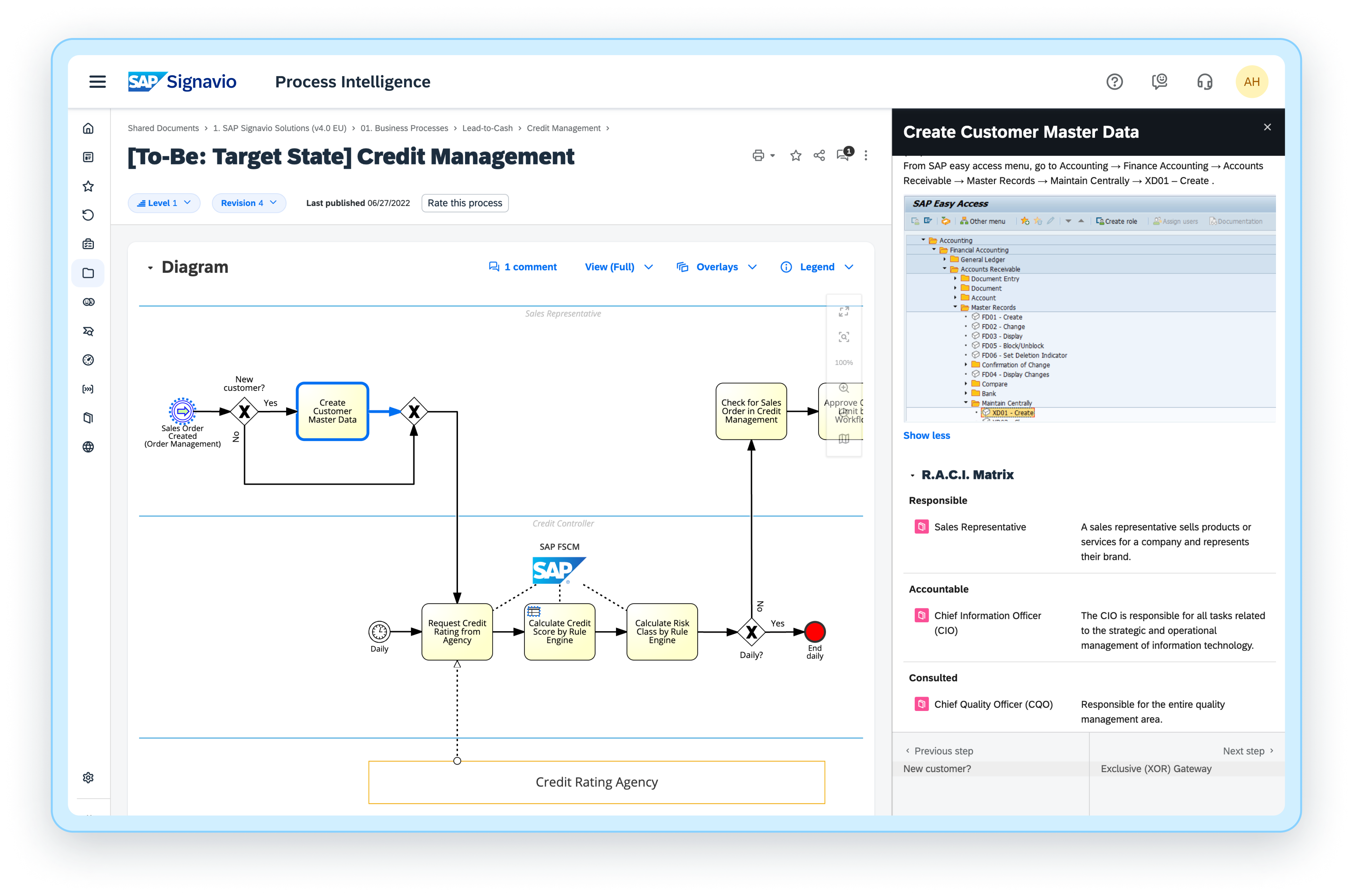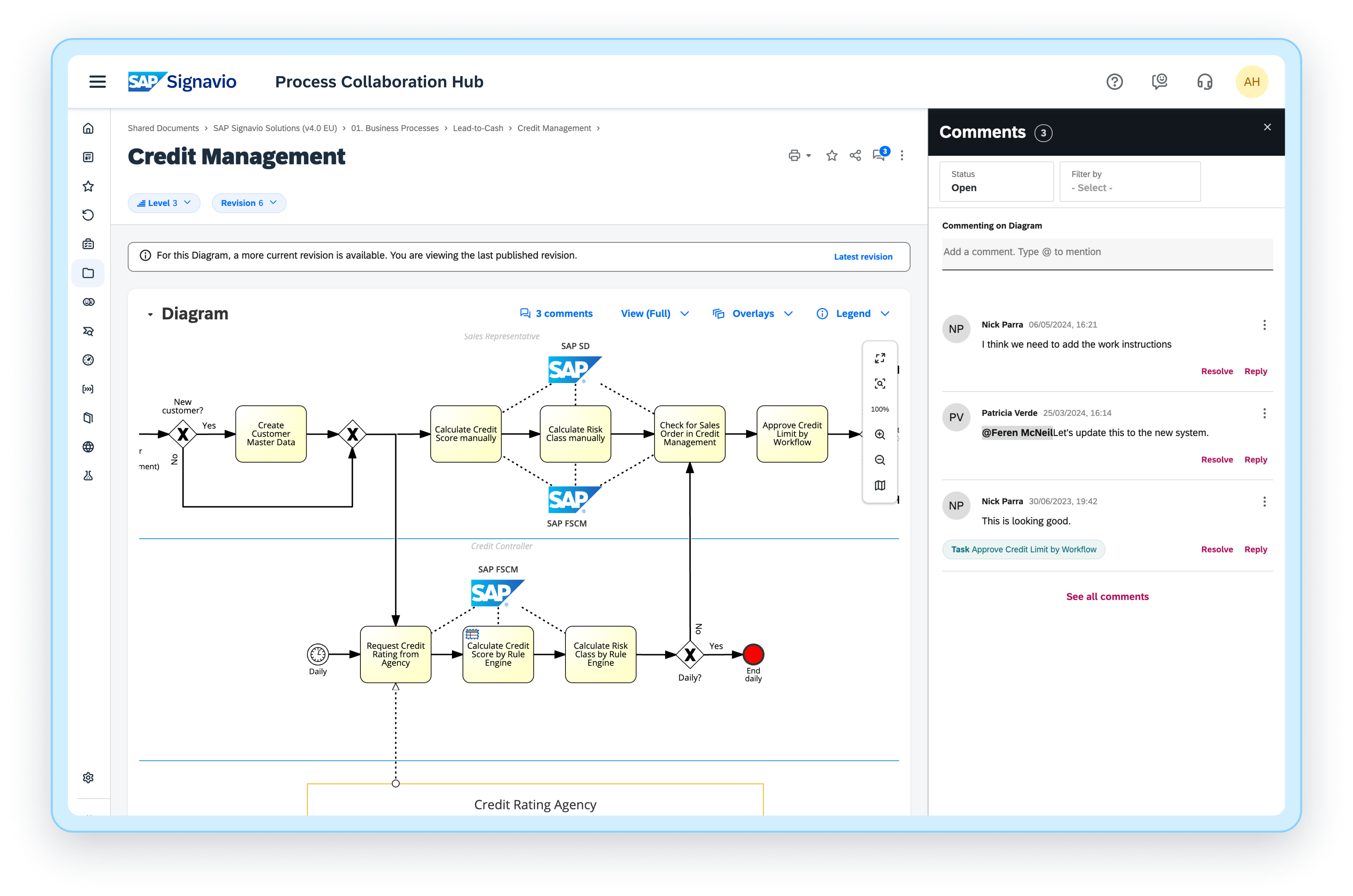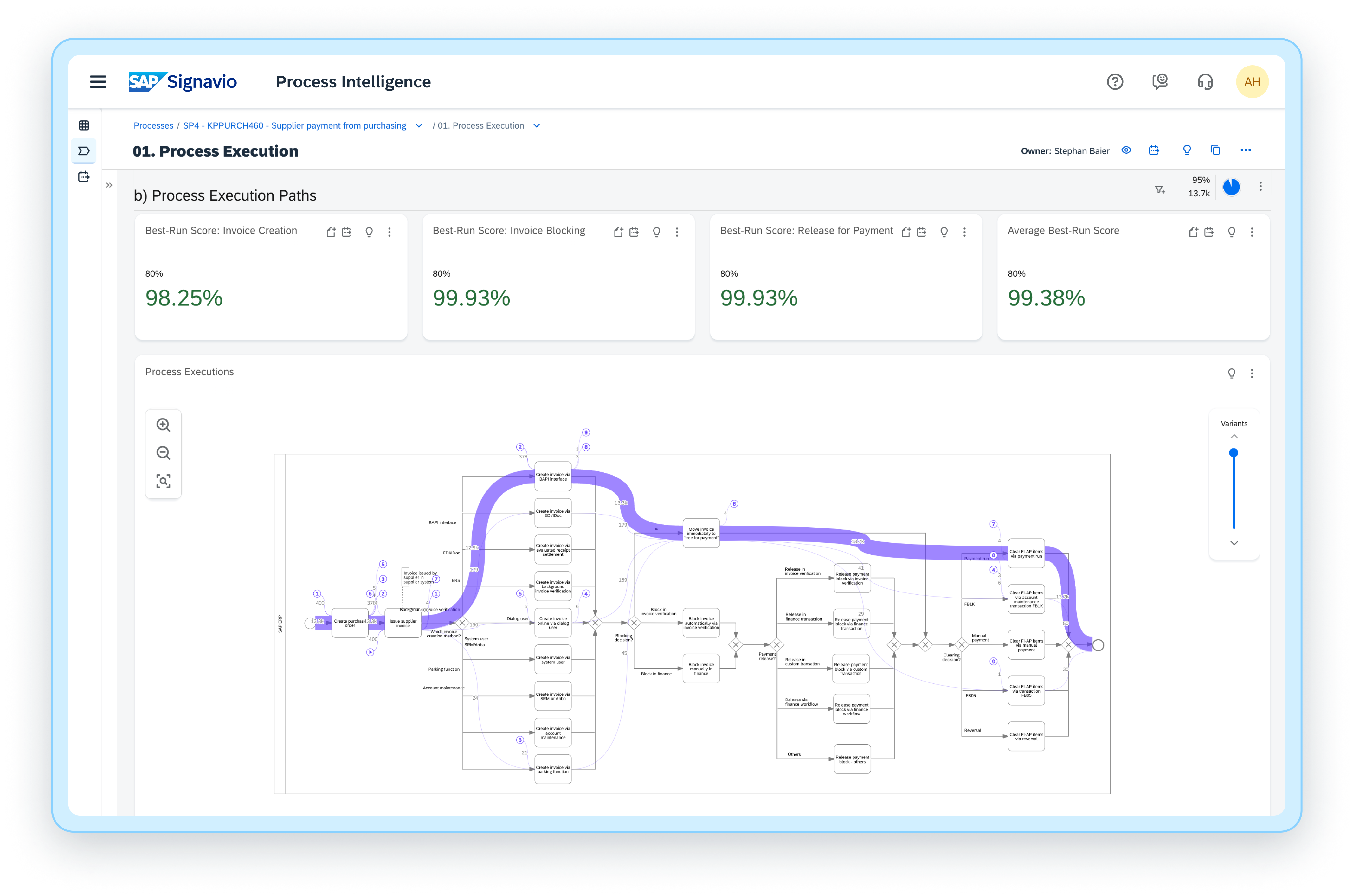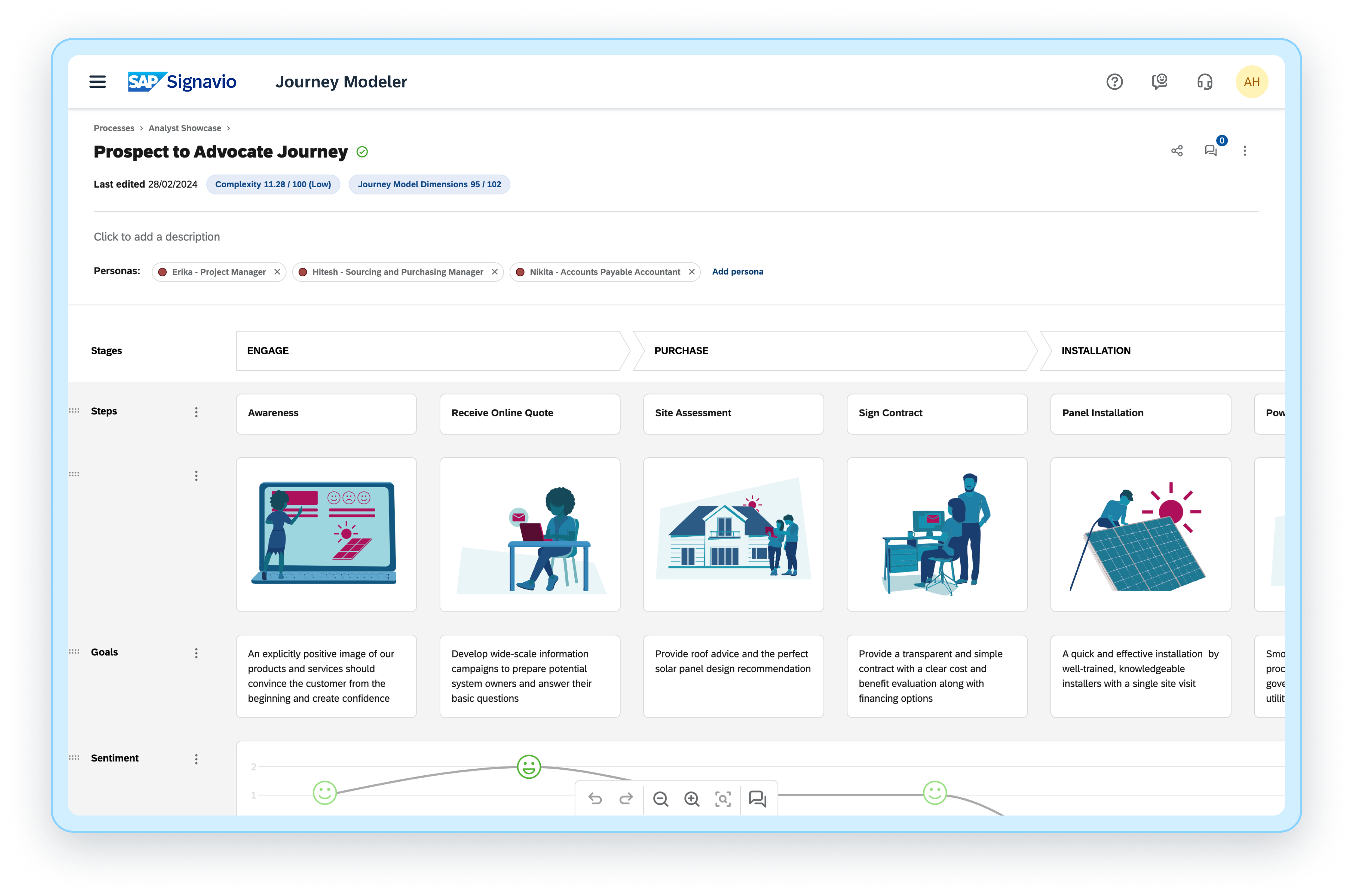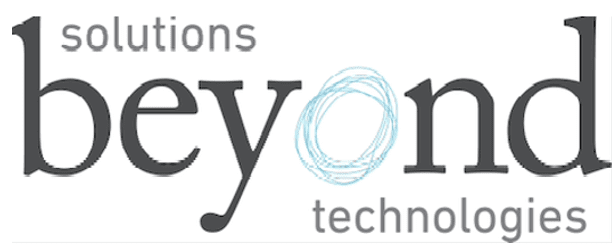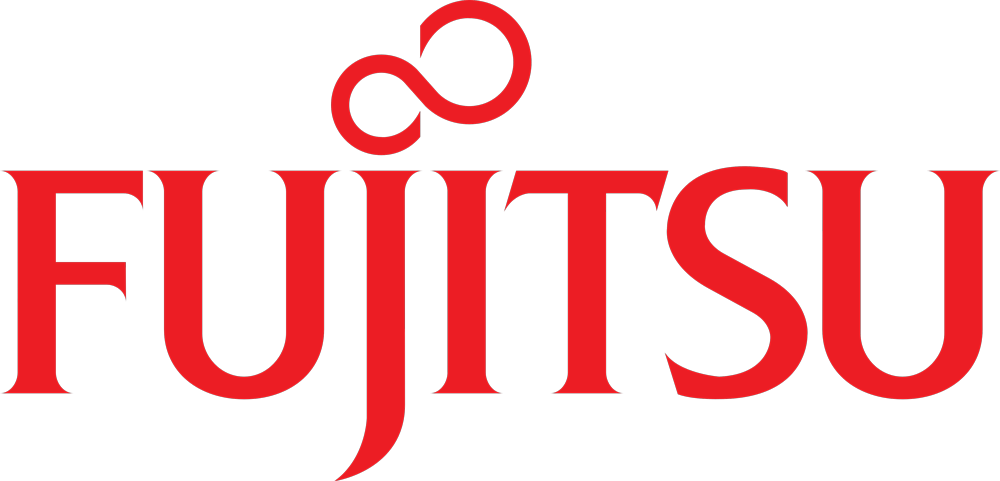80% of executives feel
they have clear objectives
they have clear objectives
yet around 40% struggle to turn
their vision into actionable plans.
their vision into actionable plans.
The Importance of Business Process Observability for Transformation and Value Creation
The ability to fully monitor, collaborate on, and improve business processes in a data-driven and measurable way is key to successfully transforming your business, continuously improving performance, and creating sustainable value. But with data increasing at an exponential rate, and complexity and market volatility adding to the mix, achieving a successful transformation and realizing continuous value becomes more difficult.
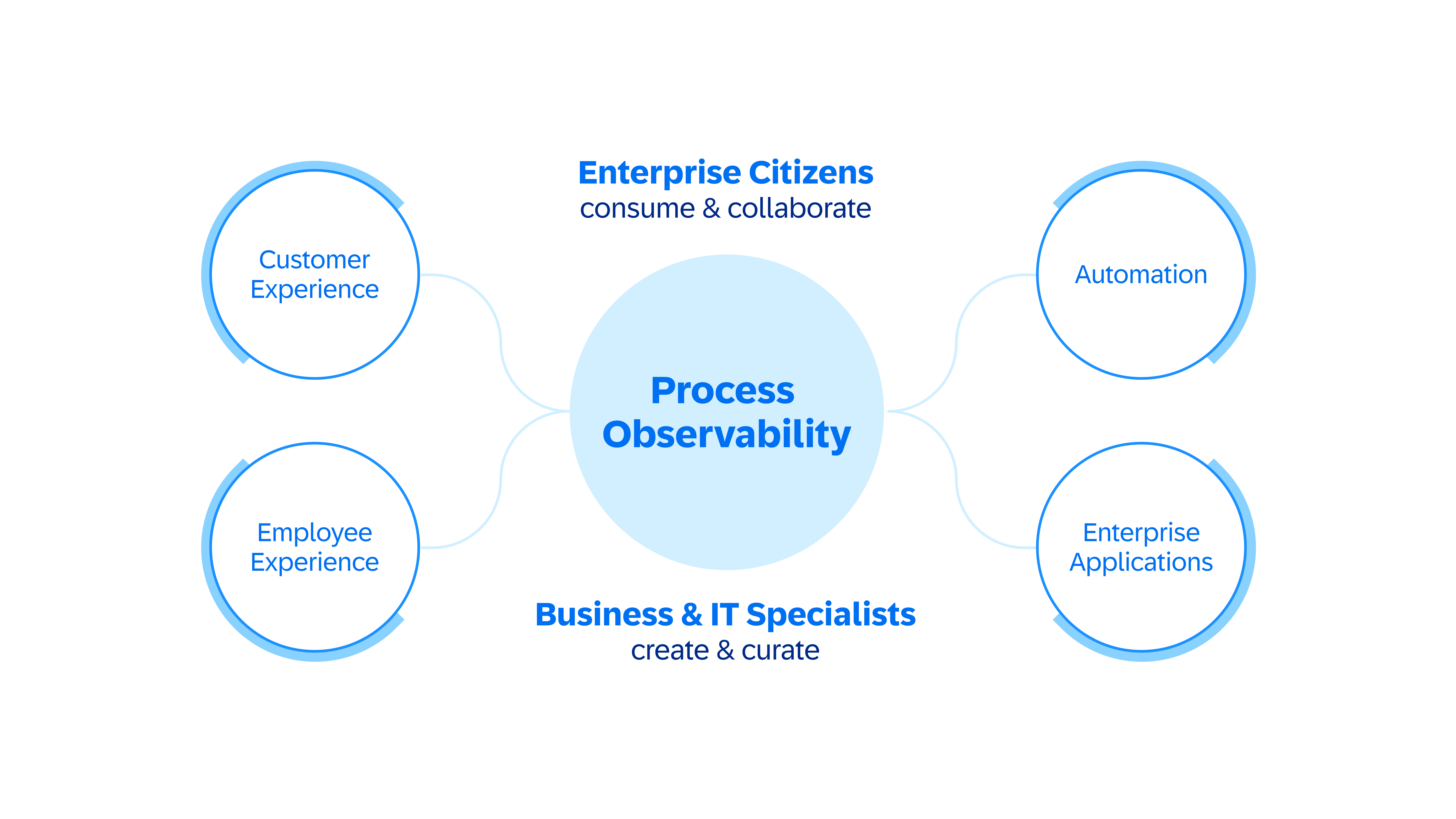
Understanding Process Observability
The emerging practice of process observability enables stakeholders to better understand how processes operate, what the expected and actual outcomes are, and what actions can be derived to improve or change these outcomes.
A Functional and Operational View
It’s also important to have a functional view as well as an operational process view and be able to connect the dots, from process identification, design, and documentation, to process change.
Driving Improvements with Process Observability
Ultimately, business process observability drives improvements in customer experience, employee experience, hyper-automation, and enterprise applications.
Build your process observability with SAP Signavio solutions
- The base layer in a process observability model is a single, data-driven view of your process landscape. SAP Signavio customers can access this view called Company on a Page.
- This page, at a glance gives you insights into hierarchical taxonomy and connections, highlighting operational metrics and process performance, and experience metrics across your processes and customer journeys.
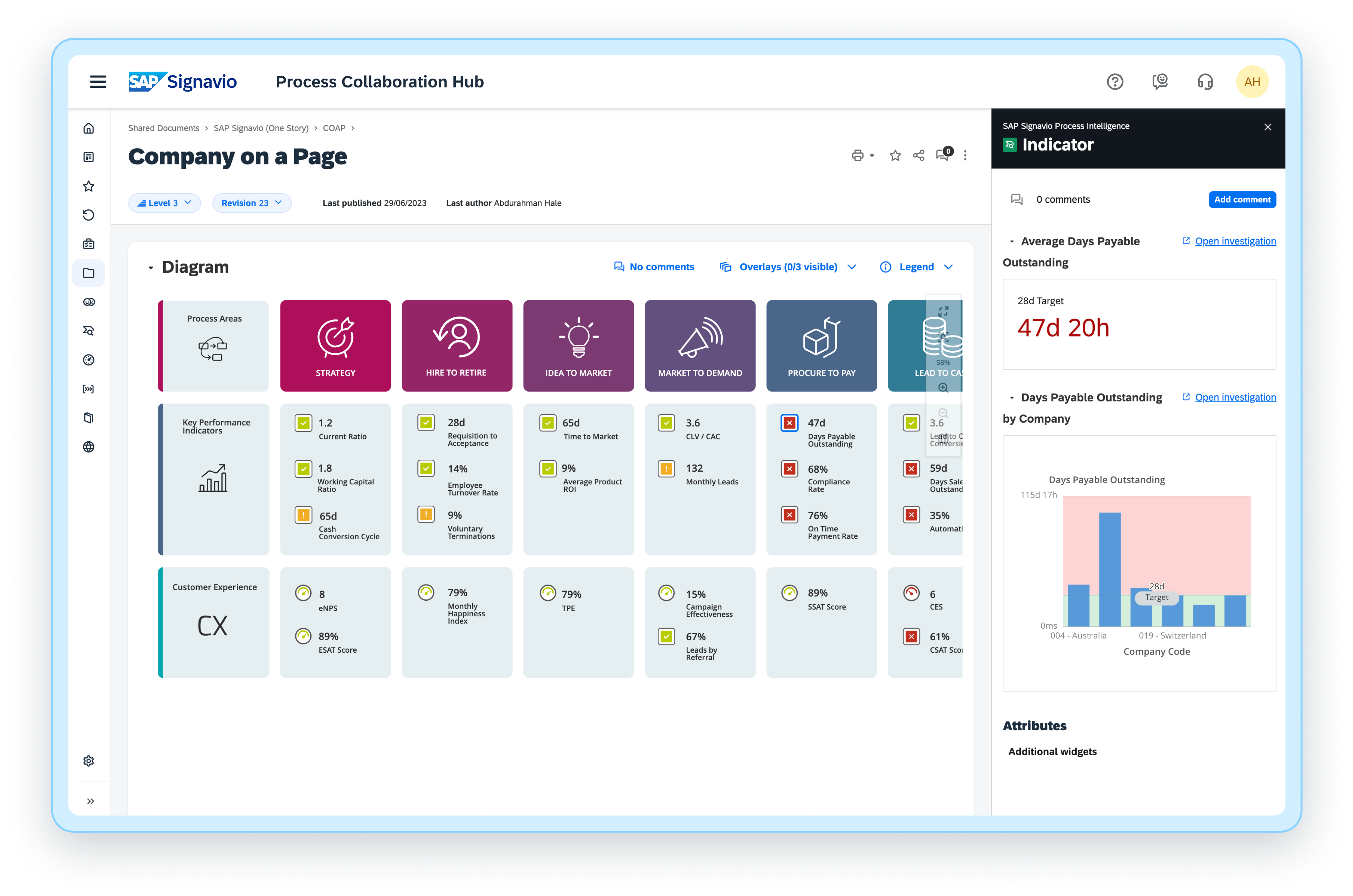
Maximize Business Performance with Enterprise Observability
IDC Info Snapshot
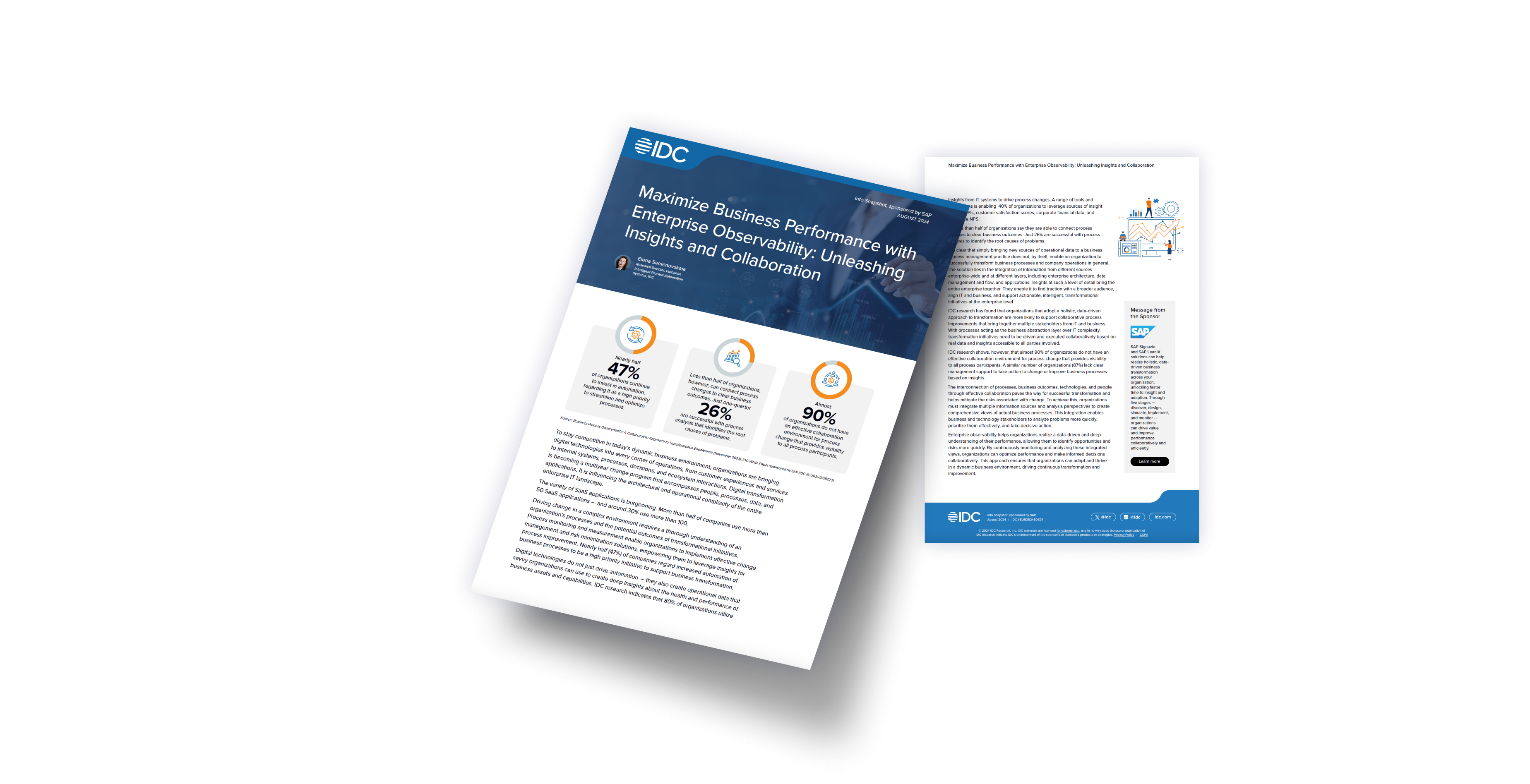
Get started, your way
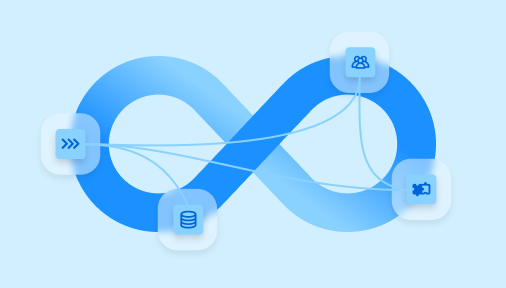
Business Transformation
Realize holistic, data-driven business transformation across your organization.

ERP Transformation
Accelerate and modernize your ERP transformation whilst embracing innovation.

Continuous Improvement
Realize ambitious innovation
and growth through continuous improvement.

Generative AI
Get instant answers to your process questions with generative AI in SAP Signavio.
Trusted by companies around the globe
Learn more from our customers

Aligning technology, processes, and architecture with strategic goals
Explore Bosch Rexroth’s journey with SAP Signavio and LeanIX solutions to unleash the power of process data for decision-making.
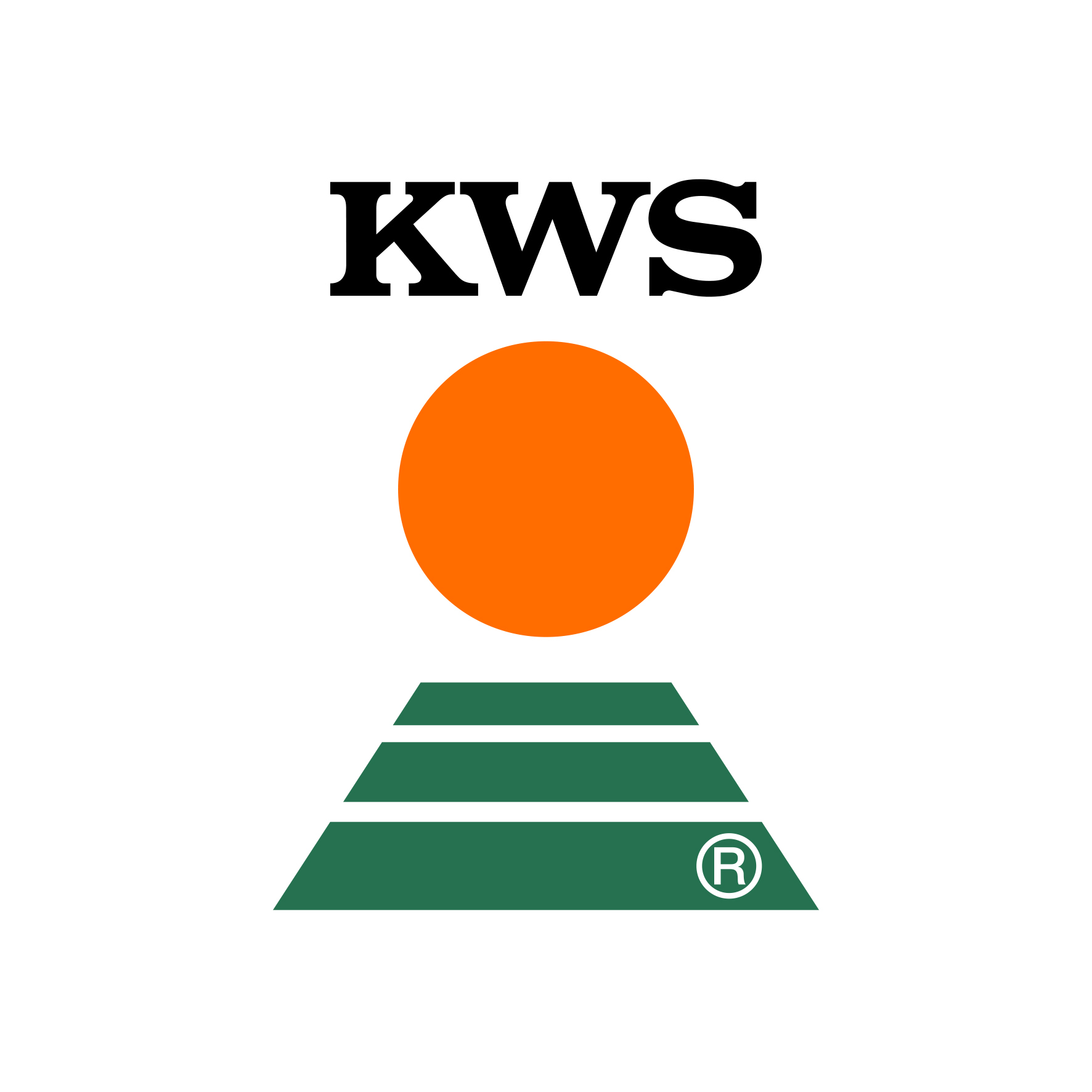
Successful business transformation becomes reality
Learn how KWS succeeded in bringing business and IT together with a full picture of the enterprise.

Mapping processes and aligning them with IT systems to aid a smooth transition
Discover how Hochland created transparency across operational processes and systems.

From customer experience and process excellence perspective
Learn how Hilti benefited from a direct link between process and journey activities.
What's new
Webinar
Fireside Chat with Hilti and IDC
Exploring the exponential value of process and enterprise observability in continuous transformations
What's new

BLOG
Process Observability
What is Business Process Observability and why does it matter?
Read it here
VIDEO
Process Observability Keynote
How to build process observability within your organization.
Watch the video

IDC INFO SNAPSHOT
Unlock the Power of Enterprise Observability
Learn how you can maximize business performance with SAP Signavio enterprise observability.
Get the report

BLOG
Large Process Models
Large Process Models: Process Management in the Age of Generative AI.
Read it here


